Temperature gradients and boost clock in detail
The reference cooler is at least as far as the GPU is concerned with the large card something on the edge of what is possible. While the Radeon RX 5700 reaches GPU temperatures in the gaming loop up to 78°C, the RX 5700 XT goes up to 84°C. However, as the temperature rises, what AMD considers a gaming tactic also drops a little. If the RX 5700 is initially 1698 MHz and the RX 5700 XT 1882 MHz clock, this drops with the heating of the card to 1685 MHz for the small and 1802 MHz for the large card.
We can see that the Radeon RX 5700 has hardly any significant clock break, whereas with the RX 5700 XT there is already about approx. 80 MHz are missing. However, this is much less than can be observed with Nvidia's Boost, even if the achieved clock rates are generally slightly lower in direct comparison. But compared to Vega, this is a good step forward, and you have to be fair.
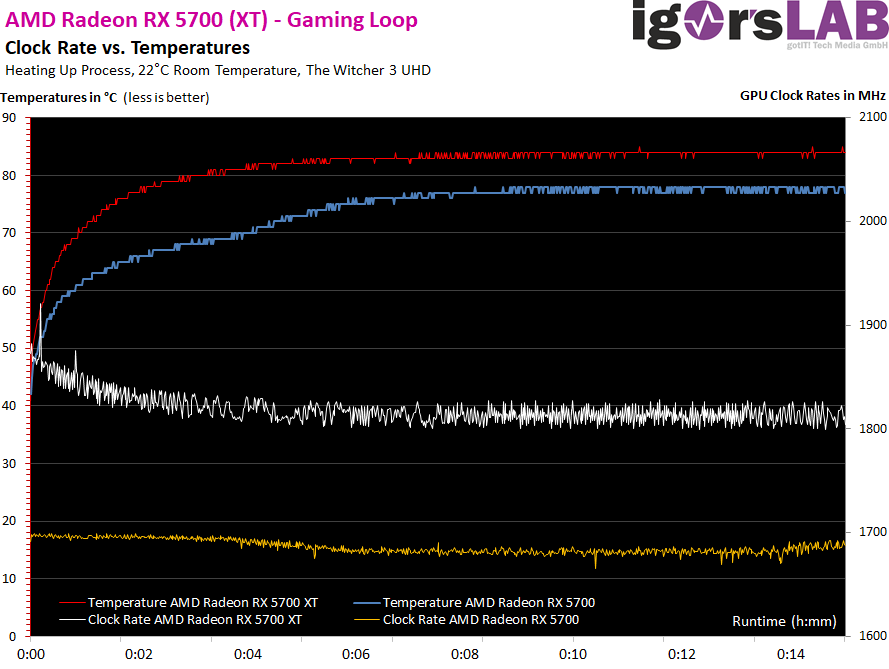
By the way, this does not look much different with the stress test, because the waste heat is largely the same as the power consumption. Only that the clock drop of the Radeon RX 5700 XT runs a little faster, but then also stabilizes well.
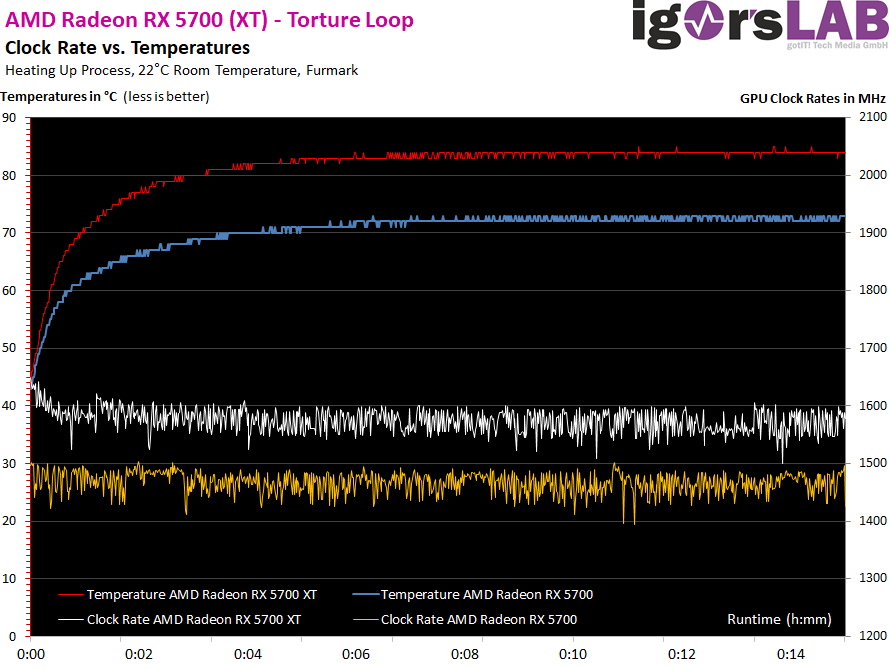
Overclocking
With the Wattman you still have very bad cards in the end, because this software either does not take over the settings correctly or lets the games crash completely, if it does not pull the whole computer along. OC and Wattman are still closing in. Afterburner, on the other hand, surprisingly does exactly what he is supposed to do. And since I would like to teaser here what else is to come, I took a screenshot of the overclocking settings (but without Memory OC, which would also be fine).
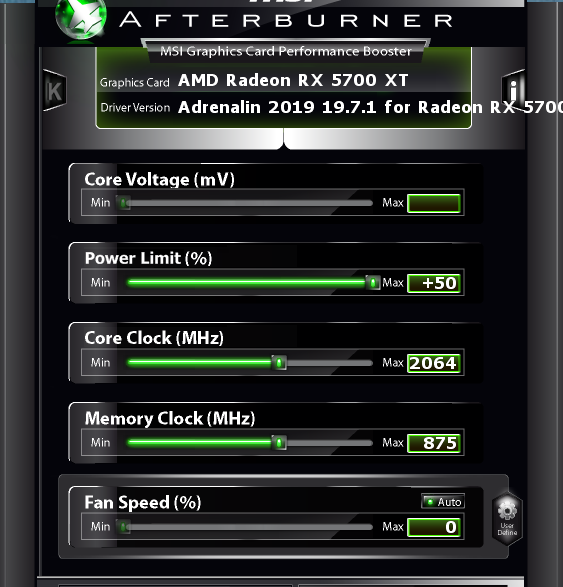
The cooling is provided by a Vector RX 5700 from EK Waterblocks, in this case the unlit acetate version, i.e. a no-frills cooling thing that does exactly what it is supposed to do. I use a non-nickel-plated prototype here, which I was able to test before the start of mass production.
If you give the little monkey real sugar, then it goes even up to the 2.1 GHz mark and in places even above it! Of course, what flows through the veins is no longer a blood stream, but a high-energy stream of life juice. But it works. Easier and more stable than the Thrill with the Radeon VII has ever given it. At approx. 2.1 GHz seems to exist a kind of physical barrier, but what's the point? There will be a follow-up as an article and video.
If you want to overclock, you should definitely resort to rx 5700 XT, which is only 50 euros more expensive, because the chip can get 50% more power limit and also clock higher. At least now the RX 5700 is already at 1850 MHz. And already in the settings. AMD seems to have deliberately installed a brake, especially since you can only increase the power limit by 20%. I will write a special follow-up to overclocking, so it's definitely worth it!
If you want to know more, now the review and video online: AMD is flooded: Radeon RX 5700 XT with an EKWB RX 5700 under water is easily overclocked to 2.1 GHz
Board Analysis: Infrared Images
The following image gallery shows all infrared images for the gaming and the torture loop in the closed case. It's logical that I don't give any values in the open benchtable for a Direct Heat Exhaust (DHE) card. We see that the RX 5700 with the 185 watts on the board side has absolutely no problems.
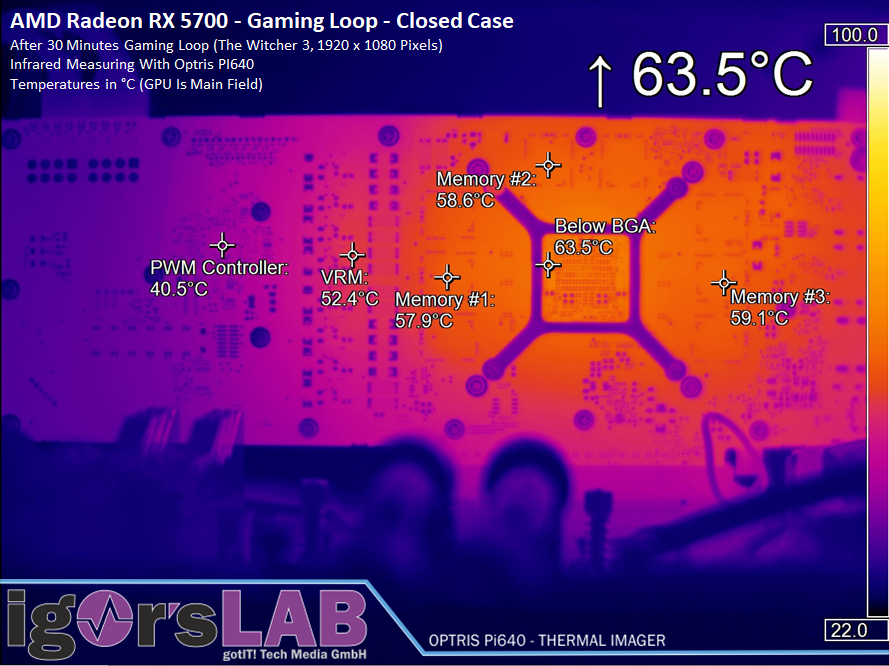
The RX 5700 XT is also well in the race despite the high GPU temperatures. It's nice that there are thermal pads (assembly frame).
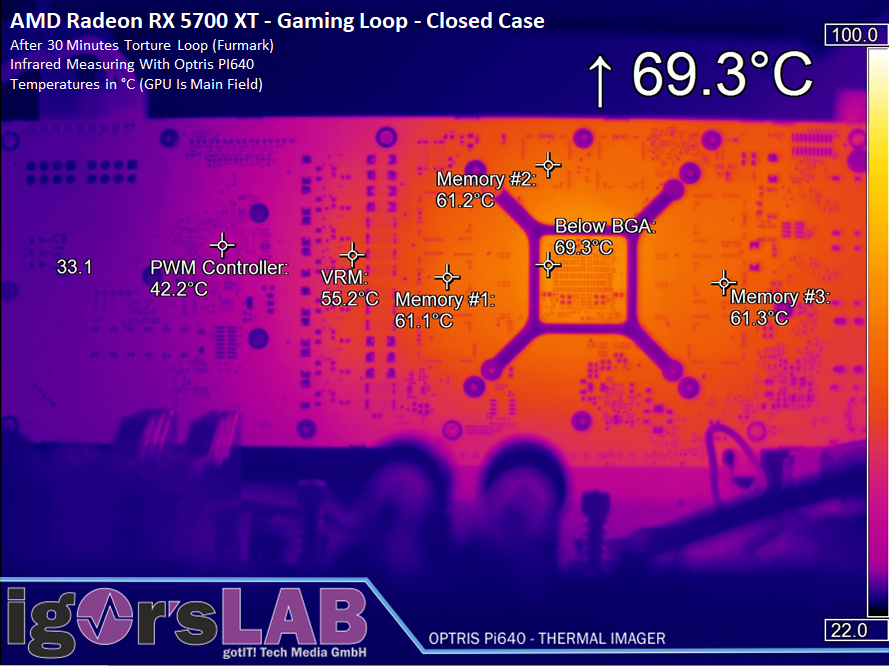
During the stress test, the RX 5700 runs even cooler than in the Gaming Loop. We had already seen this effect during the power consumption measurement.
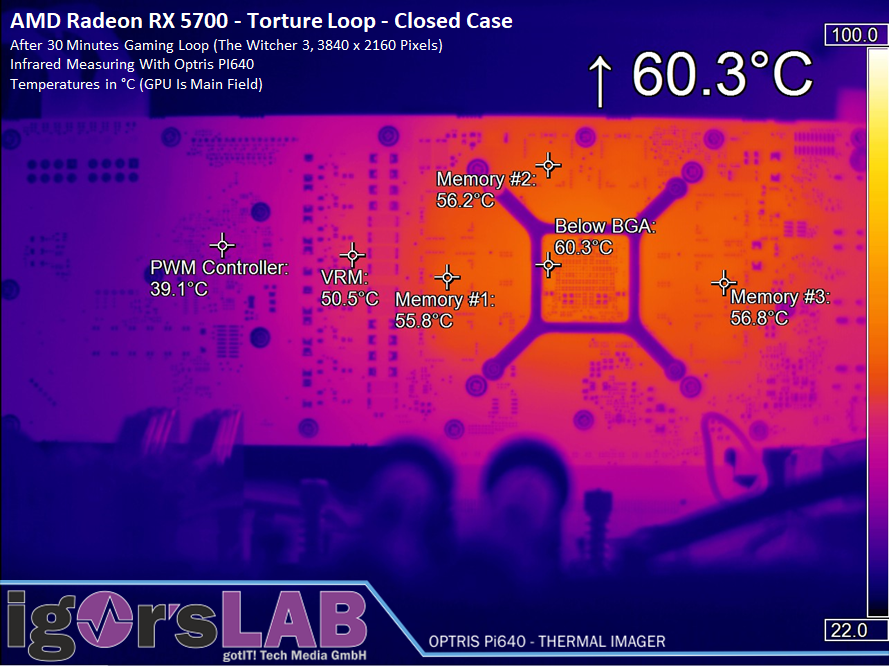
The Radeon RX 5700 XT is already much more tangible with 225 watts, but again there are no areas to be afraid of.
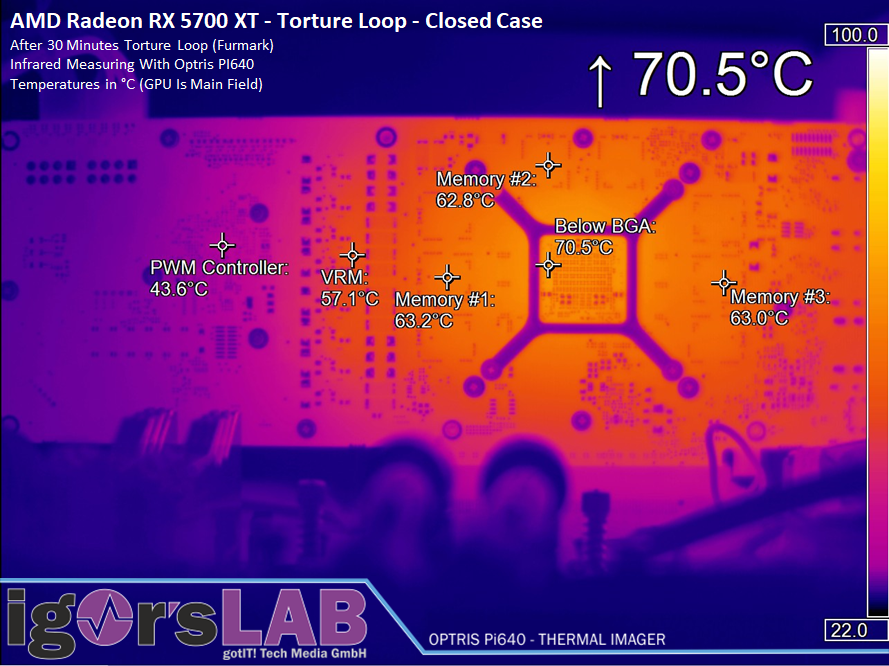
And because it was so beautiful, I have the picture of the GeForce RTX 2070 Super again at 225 watts. The GPU is cooler but the rest is much hotter. You just can't seem to have everything.
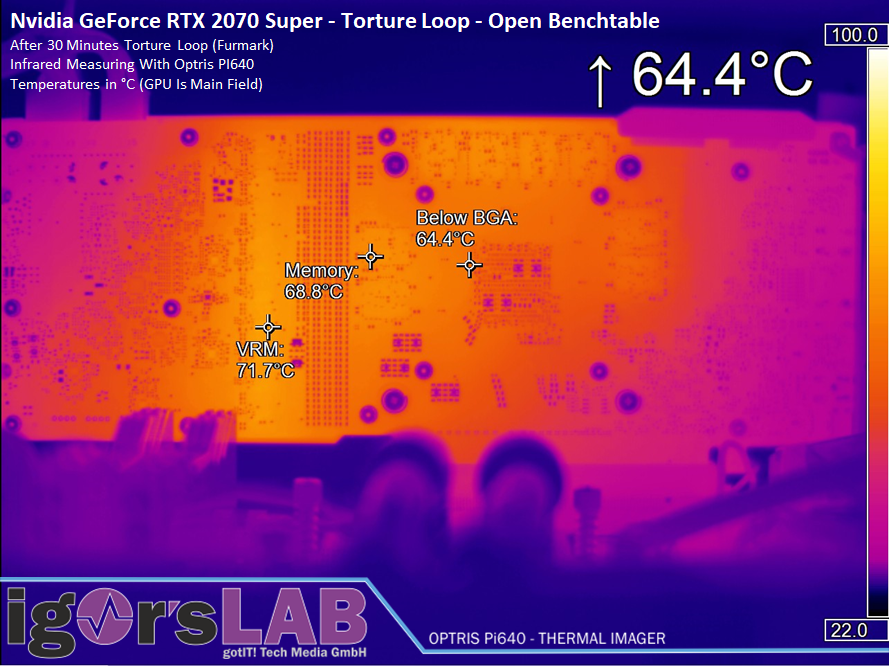
- 1 - Einführung und Übersicht
- 2 - Tear Down: Platine und Kühler
- 3 - The Division 2
- 4 - F1 2019
- 5 - Far Cry 5
- 6 - GTA V
- 7 - Metro Exodus
- 8 - Shadow of the Tomb Raider
- 9 - Total War: Three Kingdoms
- 10 - World War Z
- 11 - Leistungsaufnahme im Detail
- 12 - Temperatur, Takt, Infrarot
- 13 - Lüfter und Lautstärke
- 14 - Zusammenfassung















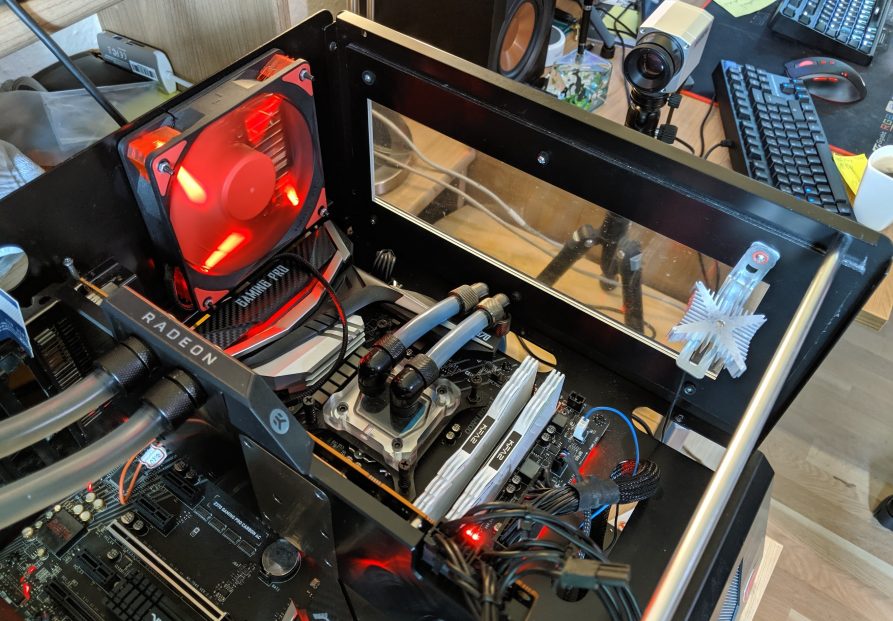
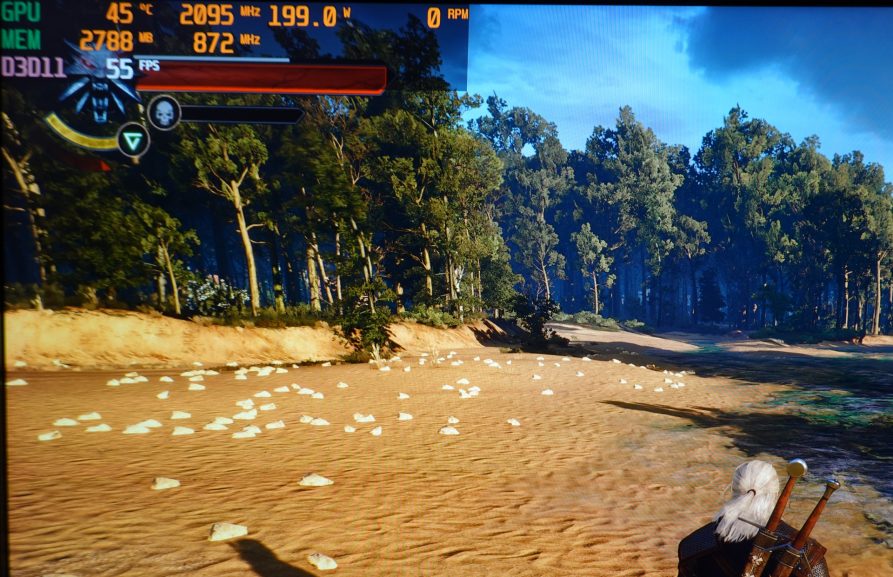



















Kommentieren